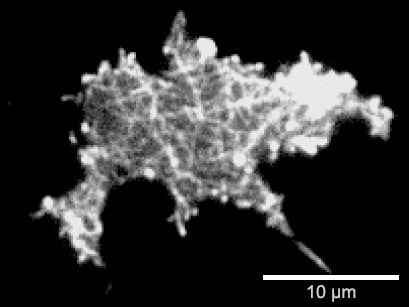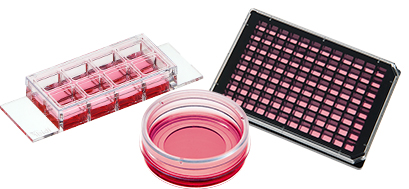 Glass Coverslip Bottom
Glass Coverslip Bottom
ibidi offers specialized glass bottom labware with a borosilicate coverglass bottom.
Please note: For most applications, the ibidi Polymer Coverslip is the material of choice, as it offers optimal cell adherence combined with excellent optical properties.
If your cells require a special coating, or if you are using a particular microscopy technique such as TIRF or super-resolution microscopy (STED, STORM), or single molecule microscopy, we recommend using the ibidi Glass Coverslip bottom.
The glass coverslip bottom is suitable for all standard ECM coatings (e.g., collagen, fibronectin, and laminin). The surface also allows for the application of all common glass chemistry modifications, such as silanization, plasma treatments, and chemical activation.
To provide the highest quality necessary for modern, high-precision microscope objectives, only D 263 M Schott glass coverslips with a thickness range of 170 μm (+/–5 μm) are used. This thickness is also known as #1.5H (high-precision). Starting with the µ-Dish 35 mm, high Glass Bottom in 2009, ibidi was the first company who used the #1.5H glass as a bottom for slides and dishes.

Surface-near F-actin network of a Dictyostelium discoideum DdLimE-GFP cell. TIRF live cell imaging on a #1.5H Glass Coverslip.
| Which bottom material should I use for my application? Please find more details in our Comparison of Material Specifications. |


The ibidi glass bottom labware is available in the following formats:
- µ-Dish 35 mm, high | µ-Dish 35 mm, low Glass Bottom
- µ-Dish 35 mm, high Grid-50 | Grid-500 Glass Bottom
- µ-Slide I Luer Glass Bottom Family
- µ-Slide VI 0.5 Glass Bottom
- µ-Slide 1 Well | 2 Well | 4 Well | 8 Well high| 18 Well Glass Bottom
- µ-Slide 2 Well Ph+ | 4 Well Ph+ Glass Bottom
- µ-Slide 15 Well 3D Glass Bottom
- µ-Plate 96 Well Square | Round Glass Bottom
- µ-Plate 384 Well Glass Bottom
 The ibidi Glass Bottom Dish 35 mm is produced by using a standard #1.5 glass coverslip with a thickness of 170 µm (+20 µm/–10 µm). This glass bottom material fulfills the needs of all standard applications where a cost-effective coverslip is required.
The ibidi Glass Bottom Dish 35 mm is produced by using a standard #1.5 glass coverslip with a thickness of 170 µm (+20 µm/–10 µm). This glass bottom material fulfills the needs of all standard applications where a cost-effective coverslip is required.
Read on and learn more about the ibidi Coverslip Bottom or the Chamber Geometry.




